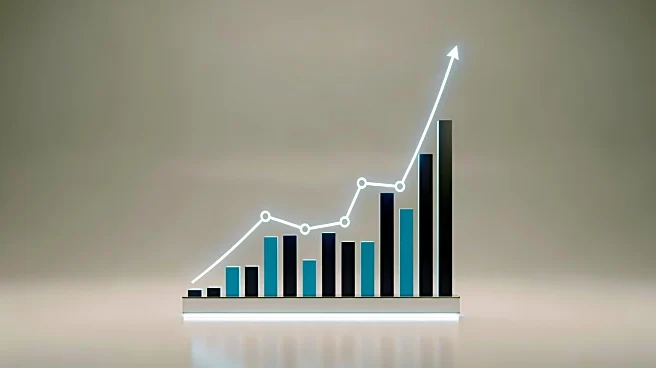What's Happening?
Greenlam Industries, a leading global laminate manufacturer, has released its financial results for the quarter ending September 30. The company reported a revenue increase to ₹8.08 billion, up from ₹6.80
billion in the same period last year. Despite this growth, Greenlam experienced a decline in consolidated net profit, which fell to ₹323.30 million from ₹346.20 million. However, the company saw improvements in its EBITDA, which rose to ₹1.04 billion from ₹814.20 million, and its EBITDA margin, which increased to 12.92% from 11.96%. These figures suggest enhanced operational efficiency despite the profit decline.
Why It's Important?
The mixed financial results of Greenlam Industries highlight the challenges faced by companies in maintaining profitability while expanding revenue. The decline in profit amidst revenue growth could indicate underlying issues such as increased costs or competitive pressures. For stakeholders, the improved EBITDA and margin are positive signs of operational efficiency, which may help mitigate concerns about the profit drop. As Greenlam is among the top three laminate manufacturers globally, its performance is closely watched by investors and industry analysts, influencing market perceptions and investment decisions.
What's Next?
Looking ahead, Greenlam Industries will need to address the factors contributing to the profit decline while leveraging the drivers of revenue growth. The company's strategies in upcoming quarters will be crucial in determining whether the current results are a temporary fluctuation or indicative of a longer-term trend. Investors and analysts will be monitoring Greenlam's actions to enhance profitability and sustain revenue growth in a competitive market.
Beyond the Headlines
The financial results of Greenlam Industries may also reflect broader industry trends, such as shifts in consumer demand or changes in raw material costs. The company's ability to adapt to these factors will be essential for its long-term success. Additionally, the results may prompt discussions on the sustainability of growth strategies in the laminate industry, considering environmental and economic impacts.











